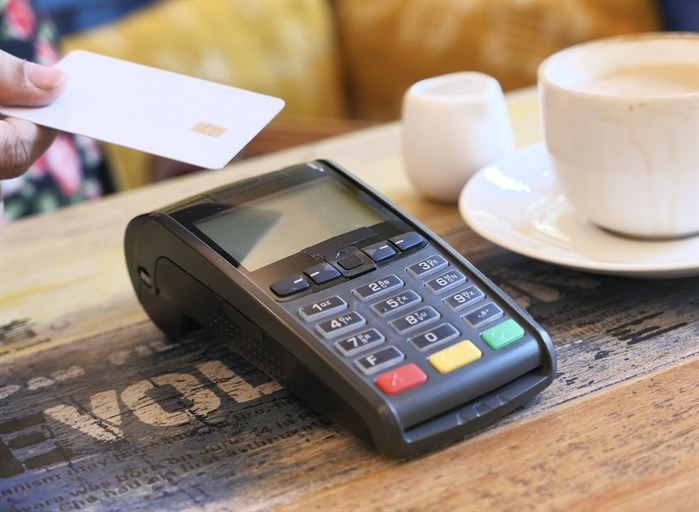Newcomers to Okanagan shocked by Canada's tipping culture

Gas stations and corner stores in Kamloops and across the Okanagan are starting to cash in on a nationwide tipping craze by adding the option to their card machines. This is on top of the substantial tipping percentage expected at most restaurants now.
While locals are feeling the pinch, it may be helpful to remember that not all countries operate this way.
A group of international UBC Okanagan students shared their thoughts with iNFOnews.ca on Canadian tipping culture, and why it's a uniquely North American phenomenon.
Jacque Rowe, a student from Australia who has been living in Canada for the past five years, said tips don’t exist down under.
“You go on Reddit, I'm in the Sydney subreddit, and people will literally call out restaurants and say don't go there,” she said. “They are so vehemently against tipping in Australia.”
Rowe said Australian servers would be lucky to get a customer’s spare change, let alone the 18% minimum service charge expected at local restaurants.
This is at least partly due to the country’s higher minimum wage, she said. Which, according to the Australian Government website, is just over 23 Australian dollars which is about 21 Canadian dollars. Most workers are also unionized.
“It's a very Australian/ British thing to be in a union,” she said. “It's such a part of culture there that everyone has respect for the workers.”
READ MORE: She organized a BC Starbucks. Then they fired her
Rowe, a former cook at a Cactus Club in Kelowna, said she believes the problem of inadequate salaries shouldn’t fall on the consumer’s shoulders and the increasing cost of services is impacting her ability to go out to a restaurant on a student budget.
“I just think in the current state of inflation, as well with food costs going up for both consumers and restaurants, it's just an unsustainable system,” she said. “Going out used to be a treat on a Friday night… You used do it and it wouldn't break the bank to go out for a nice meal or even to go for drinks with friends. Whenever I go now, I'm like holy shit, this is why I can’t afford to do this… It requires a lot more financial planning to go out now than it used to.”
Mahir Rahman, a UBCO student from Bangladesh, said he also wasn't used to tipping at restaurants before he came to Canada.
“Say if the service was really good, I think nowadays it’s common just to leave your change,” he said. “But then again if you don’t, it’s fine. No one really cares.”
Rahman said tipping culture in Bangladesh is more prevalent in barbershops than it is in restaurants.
“Haircuts are one of the places I’ve seen where everybody tips,” he said. “You go, you get a nice haircut, they do an amazing job, not really with the haircut but they take care of you, they’re nice to you, so you always give them a little bit of money after.”
Julian Pieters from Belgium said tipping is more widely expected in Canada than in Europe.
“But you can get better service in Canada,” he said. “At least that’s what I perceive.”
Chilean student, Alex Davidovich, said while you are expected to tip in most South American countries, the percentage is far less.
“In Chile you tip almost everywhere, but do it at like 10%,” he said. “There’s a big tipping culture, but not at the percentages they have here.”
Part of the reason for this is the lower wages in Chile. According to the Social Security government website, the legal minimum wage in Chile (as of 2019) is 301,000 pesos per month, which is equal to just over $460.
“I think that’s a big factor in general in countries,” he said. “When the cost of living is too high and the salaries are too low, companies rely on customers tipping. But I don’t know if that’s a special case for Chile.”
Davidovich said that, while he is used to leaving a tip, he’s not keen on coughing up more money at a gas station or corner store where there’s little customer service involved.
“If I’m just a buying a little chocolate from 7-Eleven, I didn’t receive any customer service, right? So I’m just going to pay for my chocolate,” he said.
READ MORE: More than half the Okanagan's restaurants can't make ends meet
Arcanjo Pedro, a student from Hong Kong, said there is no tipping culture in his home country.
“Unless you’re in areas where there’s a lot of foreigners, mainly white people,” he said. “There’s certain areas in Hong Kong where there’s bars that are more marketed or catered towards foreigners. Then there’s more of a tipping culture. But if you’re going to a local restaurant, you don’t tip.”
Even in the more tourist-oriented areas, the maximum tip expected is only 10%, Pedro said.
A far cry from the standard expected today in Canada.
To contact a reporter for this story, email Georgina Whitehouse or call 250-864-7494 or email the editor. You can also submit photos, videos or news tips to the newsroom and be entered to win a monthly prize draw.
We welcome your comments and opinions on our stories but play nice. We won't censor or delete comments unless they contain off-topic statements or links, unnecessary vulgarity, false facts, spam or obviously fake profiles. If you have any concerns about what you see in comments, email the editor in the link above. SUBSCRIBE to our awesome newsletter here.


